
Today, Mountain Meadows is a tranquil spot, a lovely valley of green grass and fertile land surrounded by high desert and mountainous desolation. A scattered collection of houses dot the valley, while cows, horses and mule deer graze. Yet this peaceful spot was once the scene of a brutal slaughter, a massacre of innocents committed by the residents of southern Utah. While the real reason for this event will never fully be known, the fact remains that on Friday, Sept. 11, 1857, approximately 120 lives were taken. Only the youngest children were spared, but their lives too would never recover from that day.
For many years, the LDS Church has claimed that the final resting spots of the victims of the Mountain Meadows massacre were known, and two separate memorials were installed to mark these locations. Others have disputed that these were the correct locations, but it was only recently that Everett Bassett, an archaeologist, found what is most likely the true sepulchers of both the men and women.
Using the historical records of a wide variety of sources, Bassett discovered the sites when he turned to the statements of Brevet Major J. H. Carleton. Carleton kept detailed records and measurements of his visit to the site several years after it had occurred. He measured distances and provided accurate accounts of where the graves were located.
“After some days fighting the Mormons had a council among themselves to arrange a plan to destroy the emigrants. They concluded, finally, that they could send some few down and pretend to be friends and try and get the emigrants to surrender.” — Brevet Major j.h. Carleton
“It’s always been a bit of a mystery,” Bassett said. “The big mystery down there is where it actually happened. It’s one of the best known events in the West, and yet a lot of the details are not well known. There were a lot of open questions about exactly what happened and where it happened.”
Bassett used the writings of Carleton to look for those specific details, knowing that the Brevet Major was very detailed in his record-keeping.
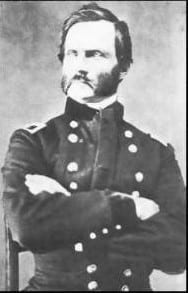
“We have a bit of information about where the bodies were buried from the army records. The army records were quite accurate, they were official reports to congress,” Bassett said. “Almost legal documents. But they sort of imply that everyone knew where the road was that the immigrants were following. That’s something that we’ve not really been too sure of.”
In September of 2014, Bassett began exploring the Mountain Meadows area. Based on his knowledge of the road systems and the historical records, the two newest monuments (the men’s and women’s memorial sites) raised doubts in Bassett’s mind. His concern was that if this was not the accurate location of the graves, then the true location was still undiscovered and likely being damaged by the natural processes of weather and erosion.
“The flip side of knowing where something is, you suddenly know where it isn’t. You stop worrying about protecting the other places. That worried me a little bit.”
Bassett decided to attempt to figure out if the locations were incorrect and if so, where the massacres actually happened. He decided to focus less on the location of the graves and to seek instead the precise location of the Old Spanish Trail, the route the settlers had been following on their route to California. He knew that if he could accurately locate the road, he could narrow his search for the graves.
“Once I had what I thought was a real road, I went back to the historic records and matched [the historic records] with my road. I went out to where one of the graves was supposedly. I took some measurements and surveying equipment, and walked to where it should be and I was standing on it. There it was, a giant pile of rocks.”
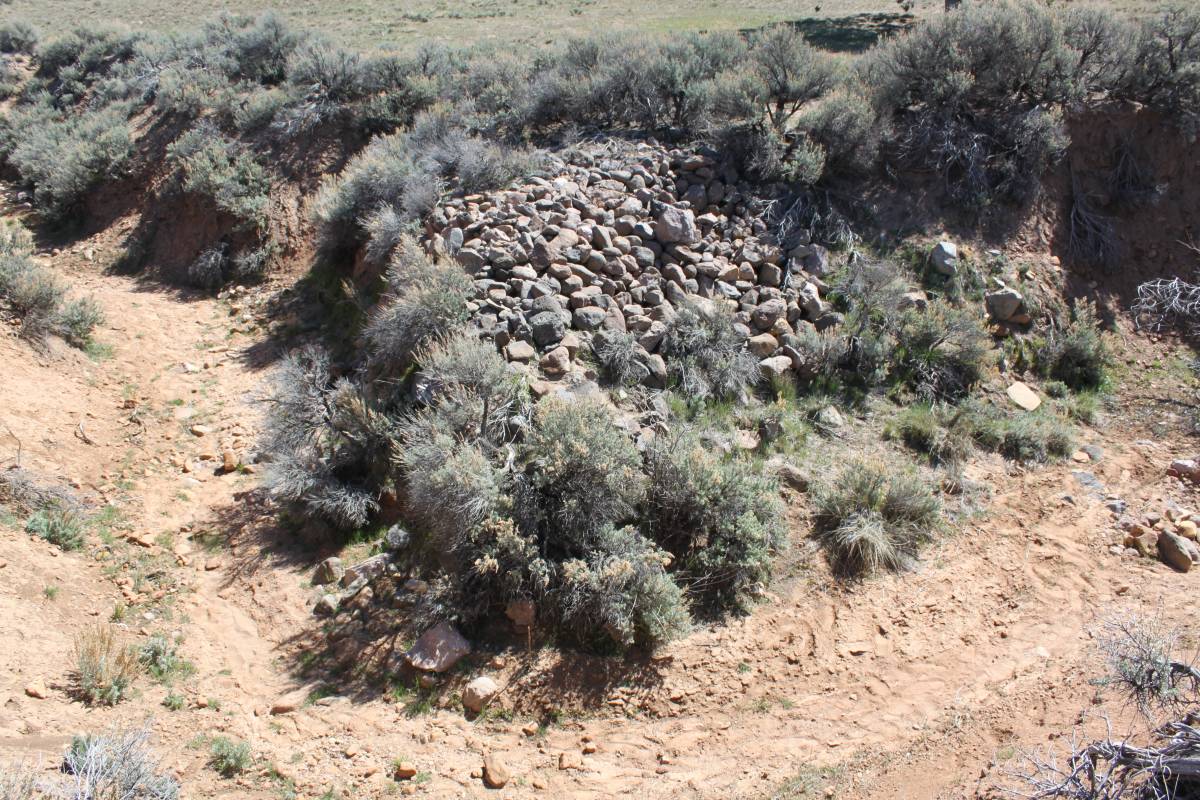
The site he had discovered was a large mound of stones. Beneath the rocks were the bodies the Army party led by Carleton had found and interred. A dry wash now cuts around the perimeter of the sepulcher.
“I’m sure a lot of people have walked by these and looked at them and said, ‘Oh, some farmer’s been chucking rocks down in there,'” Bassett said. “Both the graves were exactly where the army said they should be. After that it all fell together.”
Bassett noted that after reading the historical records and oral histories, when he began physically looking for the tombs, it took him less than half an hour to discover the sites.
“I got lucky,” he said.
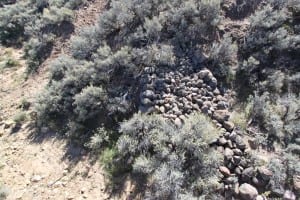
Bassett stated that while the actual location of the graves is of interest to the average person, the location of where the massacres occurred is of much more interest not only to the descendants of the victims but to the descendants of the Native Americans and Mormons who took part in the slaughter.
The two sites sit about a quarter-mile apart.
“It’s one of those special places in American history, like Custer’s Last Stand or Gettysburg, where you can actually go and say, ‘This is where this event happened.’ There’s a lot of history tied up in it.”
“I caused the distance to be measured from point to point on the scene of the massacre. From the ditch near the spring to the point upon the road where the men attacked and destroyed, and where their bones were mostly found, is one mile 565 yards. Here there is a grave where Capt. Campbell’s command buried some of the remains.” — J.H. CARLETON
One of those keenly interested in Bassett’s discovery was Phil Bolinger, President of the Mountain Meadows Monument Foundation. Representing some of the descendants of the massacre (there are several groups representing descendants), Bolinger has been to the sites and was on hand when Bassett made his announcement to the various groups in Arkansas on Sept. 11 of this year.
“We’re very excited of course. We were never convinced with the properties that were purchased [by the Mormon Church] were the correct sites where the massacre took place,” Bolinger said. “We were hopeful that Everett might come up with some news, and of course, he did. A lot of things prove that Everett is correct.”
Now that the sites have been discovered, the concern on the part of both Bassett and Bolinger is the condition of the graves and how to keep them from falling further into disrepair.
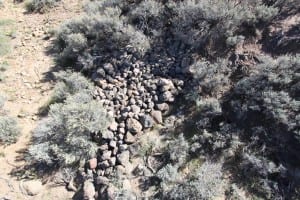
“I’m very concerned about the sites because the creek has changed after 150 years,” Bolinger said. “I’m worried about the flooding and damage that could coming into the future to those cairns. We’re hoping we can obtain some type of preservation easement with the landowners. That way we will have the ability to preserve and protect those sites. That’s all we care about right now.”
Bassett stated that he too felt the preservation of the sites was of the utmost importance.
“I want to see them stabilized so they don’t get washed away. Protected, and maybe left alone. Maybe have some sort of signage on the main highway that looks over towards them so you can see where it all happened.”
“I think the good thing now is that it can be preserved. I think this is going to be a long process,” Bassett said. “I think everybody wants to do the right thing. I’m not sure everyone will agree on what the right thing is. I’m 100 percent behind anything the descendants want to do.”
Bolinger said that he felt the various sites at Mountain Meadows would best be preserved as a National Monument. He argued that there are numerous sites around the nation that have achieved that level of distinction and that the Mountain Meadows Massacre was equally of deserving monument status. Currently the memorial is a National Historic Landmark.
“There’s not a lot you can do for folk who have been dead for 150 years but you can honor and remember and respect them in the highest possible way. We feel that all sites related to the Mountain Meadows story is worthy of a national monument. The very best we can do for them is a national monument.”

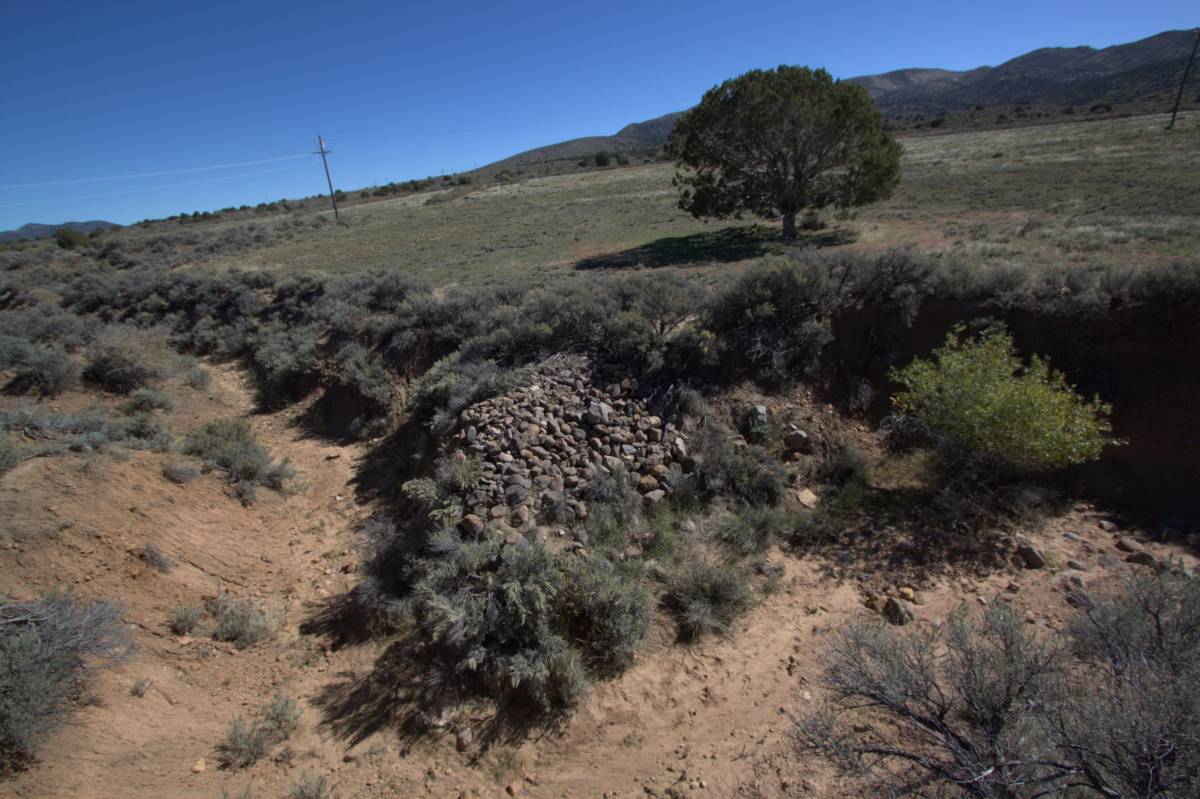



I commend Mr Bassett for sticking with this until he made this discovery…. and to Mr. Gilman for this story. I support Phil Bollinger’s efforts to turn these sites into a National Monument. It is an important historic event with significant correlations to a similar kind of religious extremism Western culture is struggling against today. Any ideology that causes seemingly decent men to do horribly indecent things needs to be studied and understood…. to the best of our abilities. We can advance that effort by elevating events like this to their rightful place in history. There are forces afoot that will oppose such efforts. But they are on the wrong side of history.